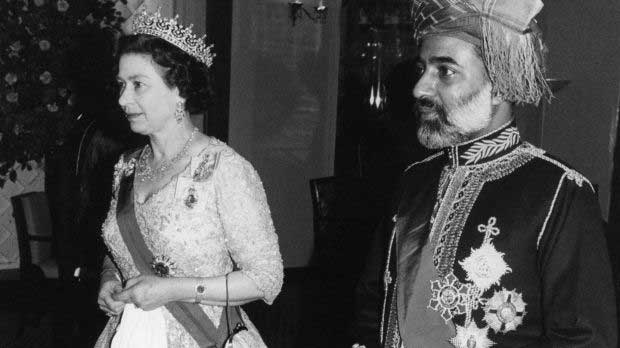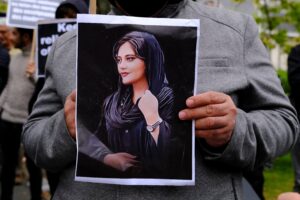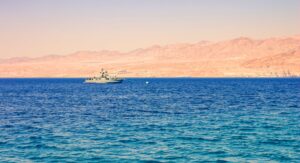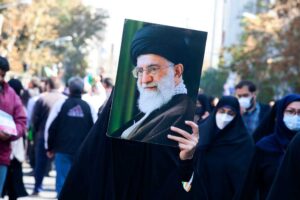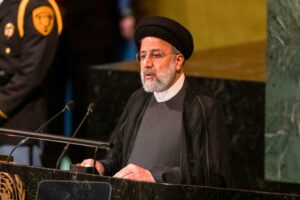This article is part of a multi-part series on Arab Gulf security.
The Sultanate of Oman is a Gulf state, an Indian Ocean state, and a critical Arabian Peninsula state that occupies the most vital geopolitical position in the Gulf. Since the 16th century, Western powers have sought alliances or outright control of Oman in order to protect their Indian Ocean trade. Oman’s historical geopolitical role has been anything but straight forward or, for that matter, stable. Thus, to blindly accept Sultan Qaboos’ Oman as permanent courts the ‘Black Swan’ – it is less than fifty years old. Understanding the Sultanate of the 21st century requires a grasp of the historical fragility, political control, and economic stability in a divided sectarian and ethnically diverse tribal environment. Oman’s historical political context is a cautionary tale of instability in a state critical to Gulf security, Indian Ocean security, and the strategic interests of the West. Although an Omani state dates back to as early as the 8th century, the contemporary construct dates only from the 1950s. Prior to that time, the geographic definition of Oman in terms of the Imamate or Sultanate was fluid, to say the least. Oman could include much of the coast of East Africa or it might be limited to the immediate environs of Muscat. Historically, authority might be centralized in an Ibadi imamate or sultanate or in shared authority with the former dominating the interior and the latter the coast. Territorial claims also extended well into the interior Bedouin regions. The seat of power might in Muscat, Nizwa, al-Rustaq, or Zanzibar depending on the whims of a given ruler. Stability has been a perpetual challenge, be that as it may, the geopolitical importance of Oman for Indian Ocean and Arabian Gulf security was an absolute given.
Oman’s Unique Identity
Neither Sunni nor Shi’a, the Ibadi or Kharijite heritage allows Oman to stand aloof from the sectarian ideological struggles that tend to affect Arab-Iranian relations in the Gulf.
Oman’s unique identity sets it apart from the other Arab states in the Gulf and contributes to the contemporary role that the Sultanate plays in the region. Neither Sunni nor Shi’a, the Ibadi or Kharijite heritage allows Oman to stand aloof from the sectarian ideological struggles that tend to affect Arab-Iranian relations in the Gulf. The Kharijite movement challenged and assassinated the last Rashidun Caliph Ali ibn Abi Talib (r. 656–661), but also resisted the subsequent Umayyad (661–750) and Abbasid caliphates (750–1258). The movement splintered with the more militant groups forming small emirates in North Africa and a quietist community, the Ibadis, who found refuge in the mountains of Oman.[i] The sect was named for its founder, Abdullah ibn Ibad al-Murri al-Tamimi, and have seen themselves as the preservers of the ‘true’ Quranic tradition.[ii] This separatist heritage explains to some degree modern Oman’s arms-length relationship with Iran as well as the other Arabs of the Gulf. Oman developed a political system in which the Ibadi Imam or Imam al-Muslimin was selected by a council of notables and religious scholars as opposed to a system relying on heredity.[iii] Although unquestionably authoritarian, Sultan Qaboos used this separatist heritage to create a unique space for contemporary Oman in the Gulf region.
Another defining element in Oman’s history is its cosmopolitan Indian Ocean heritage. Beginning in the 9th century, Oman developed as an Indian Ocean trading power focused on India, China, Madagascar, and Africa. Their commercial empire stretched from Sohar down to the Mozambique Channel.[iv] To the east the Rub’ al-Khali and al-Hajar mountains tended to isolate Oman from their Gulf Arab neighbors. Like Rasulid Yemen (1229–1454), Oman benefited from the Mongol destruction of Iran and the Abbasid Caliphate, which forced trade into a maritime pattern that enriched both. Because of this lucrative trade, in the late 15th century, coastal Oman was devastated by Portuguese attempts to control the Indian Ocean and Ottoman efforts to dislodge them. During this period, the Ibadi Nabhani Imamate (1406–1624) retreated into the interior, and Nizwa became the seat of power.
The ideological and geographic separation combined with its long Indian Ocean heritage sets Oman apart from the other Arabs of the Gulf... This unique identity and outlook merely enhances Oman’s value as a critical Western ally in the quest for stability and security in the Gulf.
In the 17th century, Oman reemerged as a commercial and naval power under the Ya’rubid Dynasty (1624–1743) as Persian, Ottoman, British, and Omani interests converged to end Portuguese control in the Indian Ocean and to destroy their Hormuzi allies at the entrance of the Gulf.[v] Under the Ya’rubids, an independent Oman played a significant role in the Indian Ocean and along the African coast as a cosmopolitan commercial and naval power. The ideological and geographic separation combined with its long Indian Ocean heritage sets Oman apart from the other Arabs of the Gulf and in part explains why “Omanis pride themselves on not falling under the influence of more powerful countries” and on their “invaluable niche” as an interlocutor in the region.[vi] This unique identity and outlook merely enhances Oman’s value as a critical Western ally in the quest for stability and security in the Gulf.
The Rise of the Al Bu Said and the British 1744–1970
The most persistent threat to the stability of any Omani is succession. Despite its success, a failed Ya’rubid succession in the mid-18th century brought civil war between the two major tribal groupings, the Ghafiri and the Hanawi.[vii] When Imam Sayf bin Sultan II sought Persian support from Nadir Shah (r. 1736–1747), he intervened, dismantling what remained of the Ya’rubid state and paving the way for the rise of the Al Bu Said dynasty (1744–present).[viii] Having resisted the Persian occupation, Ahmad bin Said bin Mohammed Al Bu Said (r. 1744–1783) became their governor in Sohar, and then revolted driving them out of Oman.[ix] He then captured Nizwa, the seat of the imamate, removed the Imam, and arranged for his own election as Imam by the ulema.[x] Both the Al Bu Said Oman and the First Saudi Emirate (1744–1818) were founded in 1744 initiating a rivalry that endures today. To compete with the Al Saud and their Qawasimi allies in Sharjah and Ras al-Khaymah, the Al Bu Said allied with the British. Stability in the new dynasty was relatively short-lived. At the time of his death in 1783, Imam Ahmad faced revolts by his sons which ultimately resulted in a split in the family in 1793. The Sultan branch of the Al Bu Said led by Sultan Sultan bin Ahmad (r. 1792–1804) controlled the primary ports, the navy, and the trading interests, and the Qays branch under Qays bin Ahmad allied with the Ibadi ulema and controlled the interior. This bifurcation of authority would persist into the mid-20th century as a chronic source of instability.
In 1798, the British alliance took on a new dimension. Napoleon’s invasion of Egypt raised concerns that Oman could be enticed into an alliance with France, which in turn threatened Britain’s link to and control of India. Consequently, British India imposed a treaty on Oman that excluded French and Dutch ships from its ports and placed a British Permanent Resident in Muscat as an advisor to the Sultan. It was the first British treaty with an Arab state and “represented England’s first intervention and entrenchment in the affairs of Oman.”[xi] In 1804, after a period of instability, Sultan Said bin Sultan (r. 1804–1856), the “Lion of Oman,” came to the throne by eliminating his rivals through assassination and cooption. His policies reinvigorated the Sultanate and resulted in a reassertion of Omani influence and power in the Indian Ocean and particularly on the African coast. Under his leadership, the Sultanate captured Mombasa and occupied Zanzibar. Said bin Sultan, now the Sultan of both Oman and Zanzibar, physically relocated his seat of power to Zanzibar Island leaving his son, Thuwayni bin Said, the Sultan’s heir apparent in Muscat to deal with tribal unrest, periodic revolts, and intermittent Wahhabi threats. Given the difficulties in ruling Oman, there is little doubt that Sultan Said saw Thuwayni as the heir apparent, but the dual Sultanates and Sultan Said’s preferred residence in Zanzibar set the stage for a succession crisis.[xii]
In 1856 when the Sultan Said died, a succession dispute between Thuwayni in Muscat and Majid bin Said, the younger son in Zanzibar, brought British intervention and the resultant Canning Arbitration and Award of 1861. John Charles Canning, the Viceroy of India (1856–1862), split the Sultanates between Thuwayni and Majid in part because the British believed that Majid could be pressured to suppress the slave trade. Unfortunately, Muscat’s wealth was largely based on its African trade. As Thuwayni put it, “The man who is given a bone can only suck it, but he who gets the flesh eats it. I am the elder brother and I have the bone in Muscat. Majid, my junior, has the flesh in Zanzibar.” Captain Robert Coghlan of the Royal Indian Navy commented that “based on legal right alone” Thuwayni was entitled to rule both Muscat and Zanzibar, but that the British imperial “law of expediency” should decide the outcome.[xiii] Canning’s decision ultimately impoverished the rump Omani Sultanate. Regarding the British, that result was no doubt unforeseen and undesirable because it totally undermined the ability of Oman to support itself. The only way for the British to maintain their position in Muscat was to make the Sultanate a virtual ‘ward of the empire’ or the alternative was to see its strategic position fall under the control of someone less malleable. British intent was to maintain a maritime peace and an off-shore commitment now they were embroiled in the internal affairs of the state, including succession and other existential issues as well as the threat posed by the Second Saudi State (1824–1891).
What began with the Treaty of 1798 had now evolved into British control of the Omani government just as the Middle East and India were becoming more complicated.
Some colonial officials were beginning to question the wisdom of British India policy. In 1866, then-Lt. Colonel Lewis Pelly, reporting to the Viceroy in India on his tour of the Gulf, commented on being “deputed” to Muscat to aid “the Sultan, whose Government (sic) was then in imminent risk of being pushed into the sea by the Wahabees.” He also commented on “the intense hatred which our destruction of Arab property on the East Coast of Africa in prosecution of our anti-slave proceedings had induced against us in the Arab mind.”[xiv] Only five years after the Canning Award, the British faced the possibility that the Sultanate might in fact be supplanted by the aggressive Second Saudi State and its Qawasimi allies. This was largely the result of British ignorance of the interconnectivity of the entire Gulf and the Indian Ocean region. In the preface to his 1872 translation of Ibn Ruzik’s History of the Imams and Seyyids of Oman, Percy Badge squarely summarized Britain’s problem: “It is remarkable and by no means creditable that the British Government in India, that notwithstanding our intimate political and commercial relationship with Oman for the last century, we know actually less of that country, beyond the coast, than we do of the Lake districts of Central Africa.”[xv] In 1888, when Feisal bin Turki Al Bu Said (r. 1888–1913) became Sultan, the British forced him to sign an agreement that “does pledge and bind himself, his heirs and successors never to cede, to sell, to mortgage or otherwise give for occupation save to the British government, the dominions of Muscat and Oman or any of their dependencies.”[xvi] It is little wonder that the Ibadi ulema in the interior viewed the Sultan as an infidel and British puppet and questioned whether he was actually an Arab.[xvii] In 1899, when the British tired of his gun running, illicit slave trading, and other proscribed activities, they threatened to bombard Muscat and personally humiliated him; nevertheless when he attempted to abdicate in 1903, Lord Curzon in India forced him to stay in office for another decade.[xviii] What began with the Treaty of 1798 had now evolved into British control of the Omani government just as the Middle East and India were becoming more complicated for the Empire.
During the 19th century, the writings of Islamic reformers like Mohammed Abduh (1849–1905) and Jamal al-Din al-Afghani (1839–1897) sparked ferment in the Muslim world. Among the Kharijites of North Africa, there was fundamentalist ferment, and in Oman, a “neo-Ibadi” movement sprang up. In 1913, the new Ibadi Imam, Salim bin Rashid al-Kharusi, with broad tribal support declared Sultan Feisal deposed and an end to the Sultanate.[xix] Generally ignorant of or misapprehending events in the interior, the British were largely oblivious to the magnitude of their problem. From 1906 to 1913, al-Kharusi used neo-Ibadi arguments to gain support for the elimination of the Al Bu Said and the Sultanate. “Ideology and pragmatism confounded to create the last Imamate of Oman, to elect the descendant of an imam from the Golden Age of the First destruction.”[xx] In 1913, Sultan Feisal died, replaced by his inept son Taymur bin Sultan. In 1915, al-Kharusi amassed a force of 3,000 tribesmen to attack Muscat. The British were stunned but despite the demands of the war in Europe, the last-minute arrival of British and Indian troops saved the Sultanate. Nevertheless, British imperial policy vis-à-vis the Omani began to raise questions. As one British officer, Major L.B.H. Hayworth, put it, “[Taymur’s] government is so bad that to continue to support it in its existing condition is nothing short of Immoral.” Luckily, in 1920, Imam al-Kharusi died, and the British with the Sultanate in tow negotiated a compromise agreement with Mohammed bin Abdullah al-Khalili, the new Imam. The Treaty of Sib represented a de facto division of Oman between the Sultanate and the Imamate, promising free trade and travel.[xxi] However, the Sultan retained de jure sovereignty while at the same time guaranteeing non-intervention in the Imamate.[xxii] Setting aside any pretexts, British India fundamentally took over the sultanate’s administration, finances, and defense.[xxiii] The contradiction in the Treaty of Sib between de jure and de facto arrangements laid the groundwork for an even greater crisis in the post-1945 era.
In 1932, the British finally allowed Sultan Taymur to abdicate in favor of his son Said bin Taymur (r. 1932–1970). The British viewed the new Sultan as an “intelligent and dynamic leader,” and the Permanent Agent in Muscat (PAM), recommended: “(Sultan Said) should, I think be given every chance to administer his State on Arab lines, and every effort should be made to free him from those relics of the past which are galling to him, while we should try, at the same time, to build up a façade of independence in the eyes of the world.” Apparently, the PAM saw no contradiction in the Sultan being “free” behind a “façade of independence.”[xxiv] In 1938, the British owned Petroleum Development Oman (PDO) reported that prospects for oil in the Omani Sultanate did not look promising and that any deposits were likely to be in the interior in the Imamate which had been promised “non-interference” in 1920 at Sib.[xxv] In addition, Sultan Said became ruler in the same year that King Abd-al-Aziz Al Saud (Ibn Saud) merged his conquests and founded Saudi Arabia. Almost immediately, this embroiled Oman in boundary disputes with both Saudi Arabia and Abu Dhabi that festered during the war years. After 1945, the crisis over the Buraimi oasis brought these boundary disputes to a head with the British acting on “behalf” of Abu Dhabi and Oman.[xxvi] The entire incident was particularly humiliating for Sultan Said. He had actually attempted to take the initiative and was prepared early-on to oust the Saudi interlopers at Buraimi. The British ordered him to stop operations immediately for two reasons. First, they were concerned about the US reaction to removing the Saudis by force. Second and most humiliating, it became apparent that the British had decided to press their claim to Buraimi through Abu Dhabi and its local governor Sheikh Zayed Al Nahyan. From this point forward, Sultan Said increasingly withdrew from active participation in governance.
"HMG’s basic interest in the Sultan of Muscat arises from the continuing possibility of oil exploitation in his territory."
Regardless, Ibn Saud’s claims also extended into the interior of Oman or more specifically the Imamate. The de facto division of Oman recognized in the non-interference clause of the Treaty of Sib provided The Kingdom with a wedge issue and a means of evening the score with the British after their ejection from Buraimi. As Percy Cox pointed out in 1926, Ibn Saud believed, “Oman was in their (Saudi Arabia’s) sphere of influence. … I have little doubt but that in the course of time he will seek to extend his authority over the interior of Oman.”[xxvii] The Eastern Department in the British Foreign Office (FO) now argued for an assessment based on “the growth of the power and wealth of Saudi Arabia and the extension of Saudi territorial ambitions to central Oman; the discovery of oil in Saudi Arabia and the Persian Gulf and the impact of new wealth on local tribal societies; and the rumoured existence of oil in Central Oman.” The FO went on to say, “HMG’s basic interest in the Sultan of Muscat arises from the continuing possibility of oil exploitation in his territory. His territory has little strategic interest apart from this, though it affords staging posts of some value to the R.A.F. [Royal Air Force] and is not geographically or even climatically suitable as an alternative site for British forces in the Middle East.”[xxviii] With India independent, Oman’s importance now centered on oil, and the Sultanate, with British assistance, occupied Nizwa and al-Rustaq. Imam Ghalib bin Ali and his brother Talib bin Ali fled and reemerged a few weeks later in Saudi Arabia. In December 1955, Sultan Said’s official visit to Nizwa was the first visit by an Omani Sultan in over a century.[xxix]
The issue of the Imamate was far from settled. Ibn Saud shifted his support to the Omani Imamate by creating the Oman Liberation Army (OLA) and sparking a rebellion against Muscat. By 1957, the Imam and his brother, with Saudi support, had been shockingly successful in destroying the Sultan’s British-led frontline units and raising the specter of a general Omani military collapse. The Sultan disagreed with the British on tactics, while in the meantime, several powerful tribes joined the rebels. Egyptian troops were now training the OLA in Saudi Arabia. In 1958, with the situation deteriorating, the British had to rebuild the Sultanate’s Armed Forces (SAF) and place them under direct British command.[xxx] With the Baghdad coup of 1958 as a backdrop, the British feared a total collapse of their position in the Gulf. The survival of the Sultanate became a priority. In late 1958, the Special Air Service and other British units moved to neutralize the rebel stronghold in the Jabal al-Akdar region, but significant provocations continued into the early 1960s just as another threat began to emerge in Dhofar.
The Dhofar rebellion was in some ways a byproduct of the Imamate’s revolt. Culturally and linguistically, Dhofar had far more in common with the al-Mahrah region of far eastern Yemen than with either Muscat or the Imamate. Acquired in 1876, it was a relatively new addition to the Sultanate and Sultan Said ruled it separately as a personal fiefdom. Said maintained control through traditional tribal leaders whose traditional tribal policies, resistance to economic development, and opposition to social reform had by the mid-20th century transformed the region into a political tinderbox. Because of a long list of grievances with the British – Buraimi, Jabal al-Akdar, and others, Sultan Said, who had relocated to his palace in Salalah, refused to deal with them or act on their advice with regard to improving the situation for the Dhofari population or anywhere else. The Sultan believed that “if Oman’s little rulers (the traditional tribal sheikhs who maintained order) were all right then so is Oman.”[xxxi] His detachment from the realities of the new Nasserist Middle East alarmed the British and their Omani allies. With Saudi and Nasserist support, a multiplicity of rebel groups arose in Dhofar during the late 1950s and early 1960s. They coalesced under the leadership of Musallim bin Nufal bin Sharan al-Kathari, a former Trucial Omani Scout (TOS). The Saudis provided weapons and logistical support to al-Kathari while the Egyptians and Iraqis provided training.[xxxii] The insurgency was a low-level affair until 1967. When the British finally withdrew from Aden and southern Yemen, the new Peoples’ Republic of South Yemen (PRSY) became a staging base for the left-wing Egyptian and Soviet-supported liberation movements. When combined with the British announcement that they intended to “withdraw” their forces in the Gulf, morale in Muscat plummeted and provided a huge psychological boost to the Dhofari insurgents and their backers.
At this point, the rebel groups consolidated under the new name, the Peoples’ Front for the Liberation of the Occupied Arabian Gulf (PFLOAG). The new title brought an epiphany in Riyadh and Saudi support ceased.[xxxiii] Two things became clear: (1) Defeating this insurgency was going to be much more difficult than containing the Jabal al-Akdar revolt; and (2) detached from reality and in many ways resenting the British as much as the insurgents, Sultan Said bin Taymur was simply not up to the job and had to go. The removal of Sultan Said in favor of Qaboos mirrored the 1966 removal of the Emir Shakbut bin Sultan Al Nahyan in Abu Dhabi. With their role in the Gulf dramatically changing, the British were tidying up, replacing weak rulers with more promising prospects. In Oman, with the support of Said’s son, Qaboos bin Said Al Bu Said and other members of the Omani royal family and government, Said was ‘detained’, forced to sign a document of abdication, and placed on an RAF transport which took him to exile in the United Kingdom.[xxxiv] The entire operation remained a secret for three days until Sultan Qaboos had received assurances of support from critical members of the Al Bu Said.
The Challenges of the Historical Context
If the Sultanate collapsed, Britain might well lose its petroleum interests not only in Oman but also on the southern Gulf littoral as well.
Oman’s imamates and sultanates dated from the early 8th century, but the political, economic, and societal norms were contested successions, rebellions, foreign intervention, and sectarian and tribal strife. After the rise of the Al Bu Said in the 18th century, the political and socio-cultural gulf between the Sultanate of the coast and the Imamate of the interior grew with the major tribal groups jockeying for advantage, which resulted in almost continual conflict of one sort or another. In the 19th and 20th centuries, increasing British control coupled with a shocking ignorance of Oman beyond the coast reduced the Sultanate to little more than an extension of British India. As the American consul in Muscat commented in 1887, “The Sultan is completely in the hand of the British representative here & generally does as he is told by that official.”[xxxv] Put even more bluntly by R.E.L Wingate, the British political agent: “Our interest has been entirely self-interested, has paid no regard to the peculiar political and social conditions of the country and its rulers, and by bribing Sultans to enforce unpalatable measures which benefitted none but ourselves and permitting them to misrule without protest has done more to alienate the interior and to prevent the Sultans from reestablishing their authority than all the rest put together.”[xxxvi] In the post-1945 era, these policies ‘came home to roost.’ Sultan Said bin Taymur, who by British accounts showed so much promise, basically withdrew from the challenges of governing Oman and dealing with the British. The problems of the 1970s can hardly be overestimated. Undermined in 1798, Omani independence (except in what was once Ibadi Imamate) for all intents and purposes disappeared after the Canning Award in 1861. If the Sultanate collapsed, Britain might well lose its petroleum interests not only in Oman but also on the southern Gulf littoral as well. After more than a century of humiliation and instability, the Sultanate’s credibility had to be revived.
[i] John Esposito, The Oxford History of Islam (London: The Oxford University Press, 1999): 35
[ii] Patricia Rizzo, Oman and Muscat: An Early Modern History (London: Croom Helm, 1986): 5. See also Fuad I. Khuri, Imams and Emirs: States, Religion, and Sects in Islam (London: Saqi Books, 1990): 57.
[iii] Ahmed H. Al-Maamiry, Omani-Portuguese History (New Delhi: Lancers Publishers,1982): 1-2. See also Roby C. Barrett, The Gulf and the Struggle for Hegemony: Arabs, Iranians, and the West in Conflict (Washington, D.C.: The Middle East Institute, 2016): 279.
[iv] Wendell Phillips, Oman: A History (London: William Morrow and Company, 1962): 24–27. See also R.J. Gavin, Aden under British Rule (London: C. Hurst & Company, 1996): 11.
Phillips, A History, 46–51. In 1620, Nasir bin Murshid al-Ya’ruba (r. 1624–1649) of the Banu Ya’riba tribe was the first imam of the Ya’rubid Dynasty (1624–1743). Tribally, Nasir was a Ghafiri ‘Azd. Called the “Upright Ibadhi,” Nasr aggressively campaign against both the Portuguese and his Omani tribal opponents. As one chronicler described the volatility of the times, “no Omani ‘great or small’ died a natural death.” In 1650, Imam Sultan bin Sayf I (r. 1649–1679), Nasir’s cousin and successor, followed by Sultan bin Sayf II (1711–1718) focused on driving the Portuguese from the African coast and reestablishing the Omani trading empire. Sayf II transformed Oman into a real naval power, with a fleet that included one 74-gun, two 50-gun, and eighteen 12- to 32-gun warships This allowed Oman to control the entire African. He also raided Portuguese settlements in India, and in 1717, temporarily captured Bahrain from the Persian Safavids.[v] The success of the 17th and early 18th centuries represented a golden age of Omani wealth and power. Despite all its accomplishments, the Ya’ruba Imamate collapsed because of a failed succession, the Achilles Heel of every Omani dynasty past and present. See also, Barrett, Gulf, 280–282.
[vi] Louisa Keeler, “Can Oman Survive Its Own Neighborhood After the Death of Sultan Qaboos?” Foreign Policy Research Institute (January 21, 2020): https://www.fpri.org/article/2020/01/can-oman-survive-its-own-neighborhood-after-the-death-of-sultan-qaboos/
[vii] Phillips, A History, 53. Hanawi is the term given to a tribal grouping that is Ibadi and traces its lineage back to the first Yemeni tribes of Qahtani origin who migrated to Oman. Ghafiri designates a tribal grouping that has Sunni and Ibadi elements and is Adnani, or northern Arab in origin. While this may sound insignificant, it is not. Arabs who see themselves as Qahtani in origin will tell you that they are the pure Arabs whereas the Adnani are northern Arabs whose lineage includes non-Arab ancestors. In most instances, officials and others will downplay the differences between Adnani and Qahtani or in Oman between Hanawi and Ghafiri, but everyone is acutely aware to which group they belong. Phillips believes the great schism of 1722–1723 created the split that has continued into the contemporary period.
[viii] John C. Wilkinson, The Imamate tradition of Oman (Cambridge: Cambridge University Press, 1987): 50.
[ix] Sail ibn Razik, History if the Imams and Seyyids of Oman from A.D. 661 to 1856, translated by George Percy Badger (London: The Hakluyt Society, 1872): 145–155. In the 1744 revolt, Ahmad bin Said was rather harsh is his treatment of the Persians. To initiate the revolt, he invited Persian commanders to a feast at his palace in Sohar and then slaughtered them. He also starved Persian prisoners to death and at one point put others on ships ostensibly to return to Persia and then locked the prisoners below deck and burned the ships. Ahmad bin Said’s ferocious opposition to Persian rule enhanced his political legitimacy and his reputation among other Omani’s as someone not to be trifled with.
[x] Patricia Rizzo, Oman and Muscat: An Early Modern History (London: Croom Helm, 1986): 41–44. When the governor of Zanzibar declared his independence arguing that “The Imam has usurped Oman—I have usurped Mombasa,” Ahmad had assassins kill him for his defiance. See Phillips, A History, 65.
[xi] Phillips, A History, 70–72.
[xii] Robert Geran Landen, Oman since 1856: Disruptive Modernization in a Traditional Arab Society (Princeton, N.J.: Princeton University Press, 1967): 71–75.
[xiii] J.B. Kelly, Britain and the Persian Gulf, 1795–1880 (Oxford: The Clarendon Press, 1968): 541–551.
[xiv] Lt. Colonel Lewis Pelly, Political Resident for the Persian Gulf, Report of a Journey to the Wahabee Capital of Riyadh in Central Arabia (Bombay: Printed for th Government of India by The Education Society’s Press, 1866): 1–7.
[xv] Salil Ibn Razik, History of the Imams and Seyyids of Oman from A.D. 661 to 1856, translated by George Percy Badger (London: The Hakluyt Society, 1872): 3.
[xvi] Busch, Britain and the Persian Gulf, 20.
[xvii] J.B. Kelly, Arabia, the Gulf, & the West (London: George Weidenfield and Nicolson Limited, 1980): 110. According to Kelly, Feisal could not even speak Arabic and usually conversed in Gujarati.
[xviii] Phillips, A History, 149.
[xix] Fred Scholz, Entwicklungstendenzen in Bedunentum der Kleinen Staaten am Persischen-Arabischen Golf–Oman als Beispiel (Vienna: Mitteilungen der Osterreichischen Geographischen Gesellschaft, 1976): 89.
[xx] J. E. Peterson, Oman in the Twentieth Century (London: Croom Helm, 1978): 30.
[xxi] Francis Owtram, A Modern History of Oman: Formation of the State since 1920 (London: I.B. Tauris, 2004): 50.
[xxii] “Minute from Department of Research to the Eastern Department, 24 December 1954,” PRO, FO 371/114578: 15–16.
[xxiii] Owtram, Modern History, 62–65.
[xxiv] Owtram, Modern History, 79.
[xxv] Peterson, Oman in the Twentieth Century, 31.
[xxvi] Roby C. Barrett, “The United Arab Emirates: The British, Indispensability, and the Union,” Manara Magazine (December 1, 2021): https://manaramagazine.org/2021/12/01/the-united-arab-emirates-the-british-indispensability-and-the-union/.
[xxvii] Wilson, The Imamate Tradition, 289.
[xxviii] Briefing Paper from the Eastern Department/Arabia: The Sultan of Muscat and the Interior of Oman, 1 May 1953,” PRO, FO371-104294, EA1081/519/G.
[xxix] Majid Al-Khalili, Oman’s Foreign Policy: Foundation and Practice (Westport, Connecticut: Praeger Security International, 2009): 24–26.
[xxx] “Minute on Operation Dermot in Oman from Eastern Department, 11 August 1958,” PRO, FO371/132524, BA1015/93. British operations were done as cheaply as possible because it was a business proposition. London was after the oil, which would justify and pay for the war.
[xxxi] Owtram, Modern History, 121–122.
[xxxii] J.E. Peterson, Oman’s Insurgencies: The Sultanate’s Struggle for Supremacy (London: SAQI, 2007): 187–193.
[xxxiii] Ahmed Hamoud al-Maamiry, Oman and East Africa (New Delhi: Lancers Books, 1979): 116–117. See also Peter Thwaites, Muscat Command (London: Leo Cooper, 1995): 74.
[xxxiv] Calvin Allen, Jr. and W. Lynn Rigsbee II, Oman under Qaboos: From Coup to Constitution, 1970–1996 (London: Frank Cass Publishers, 2002): 238–241. See also, Ian Gardiner, In the Service of the Sultan: A First Hand Account of the Dhofar Insurgency (London: Pen & Sword Military, 2006): 23 in which the author points out that for Sultan Said removal “may have been a relief.”
[xxxv] “Report from Consul Mackirdy to Department of State, August 24, 1887” National Archives, 59, T–638/1. Quoted in Briton Cooper Busch, Britain and the Persian Gulf, 1894–1914 (Berkeley, California: The University of California Press, 1967): 18
[xxxvi] Wilkinson, Imamate Tradition, 251. Taken from “Report No. 2052 from Wingate,” British Library, IO L/P & S/10/427.

